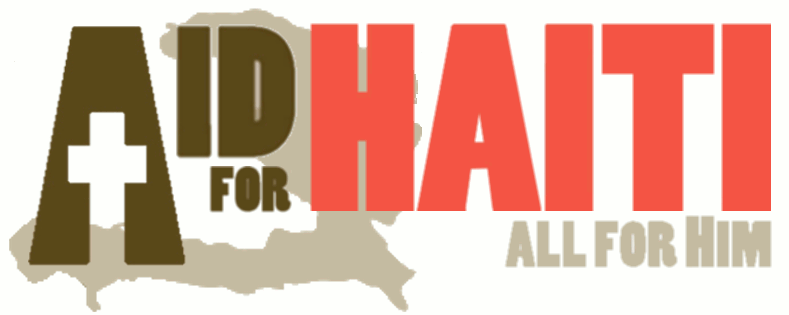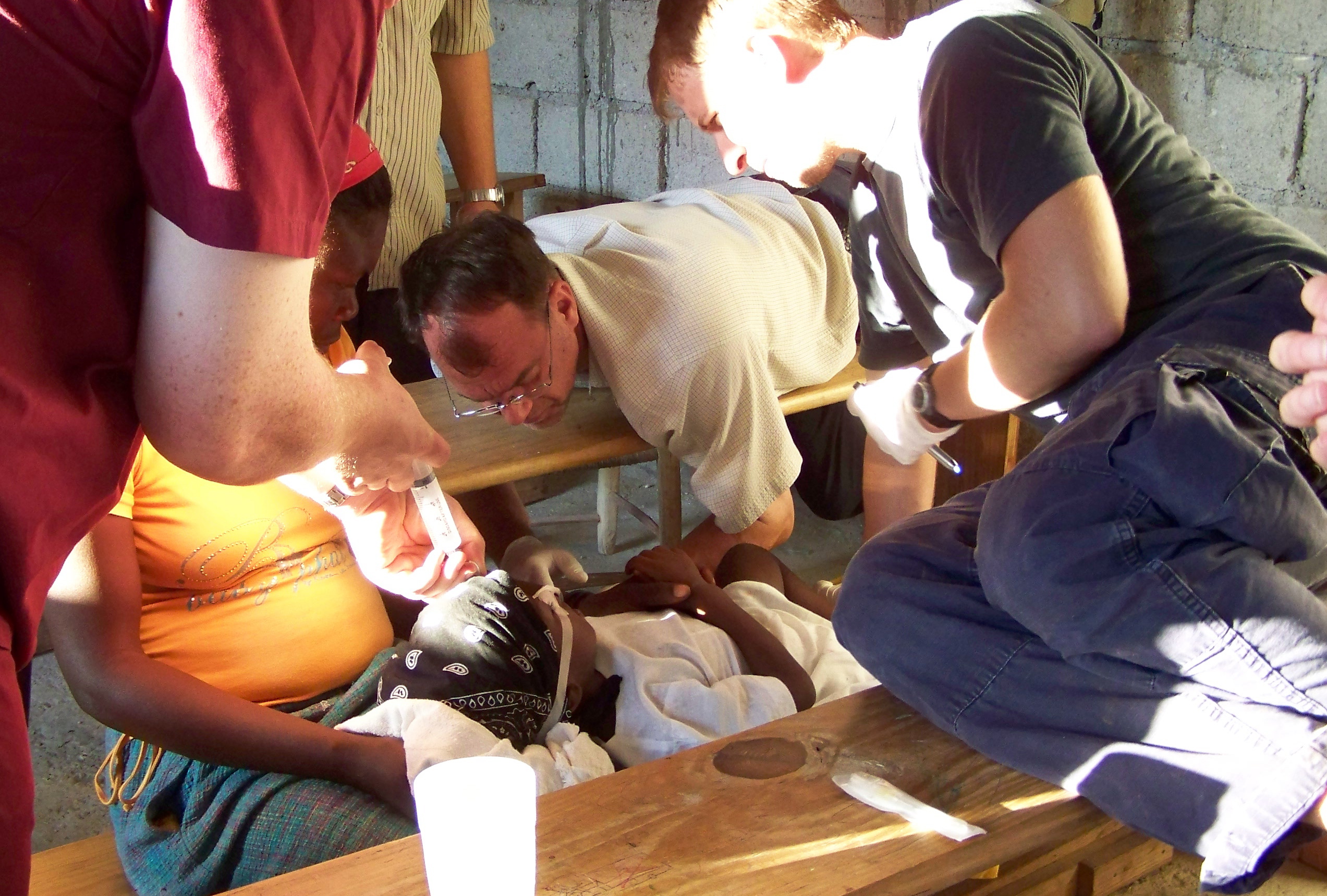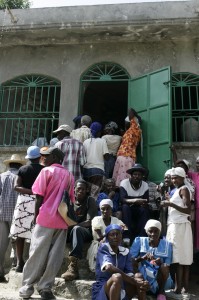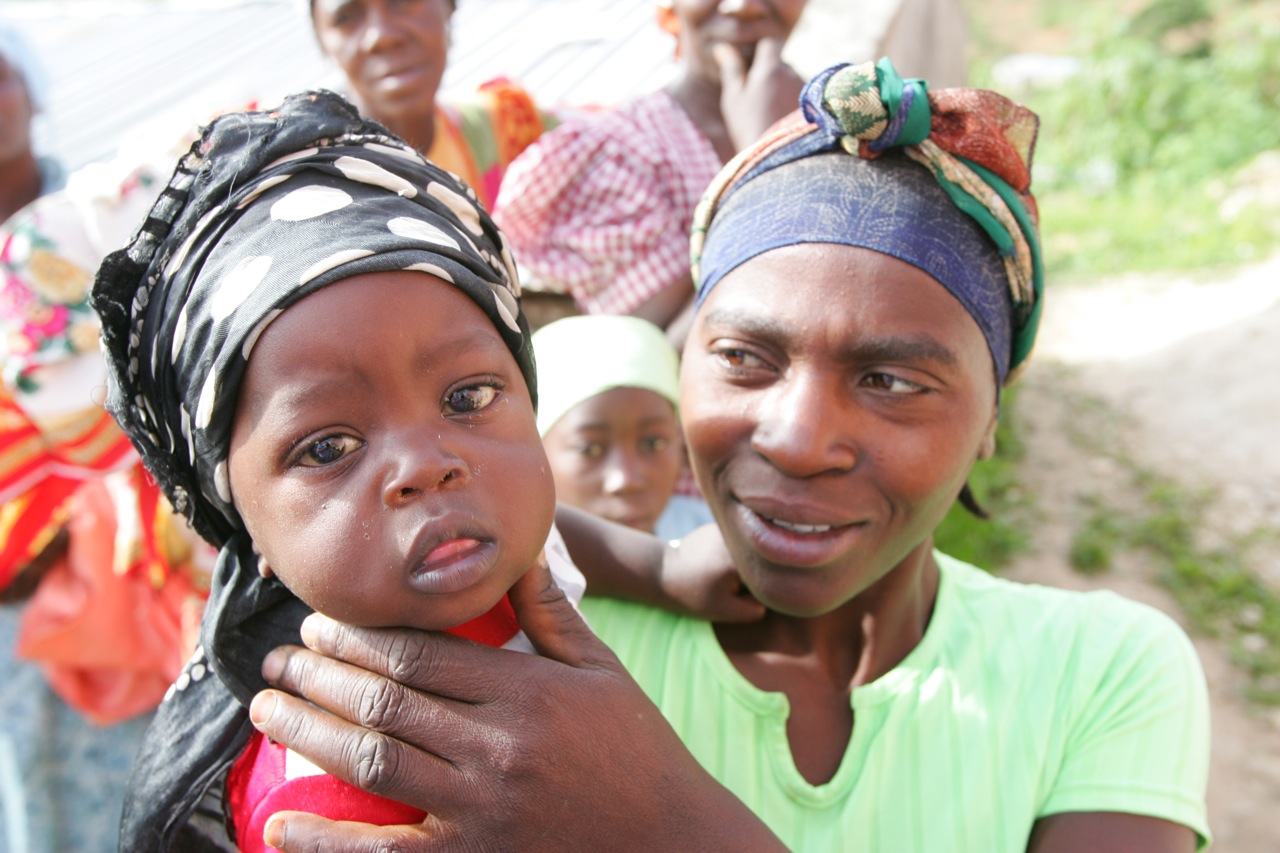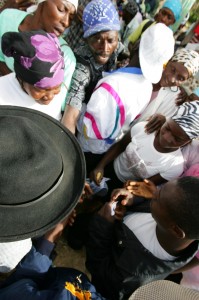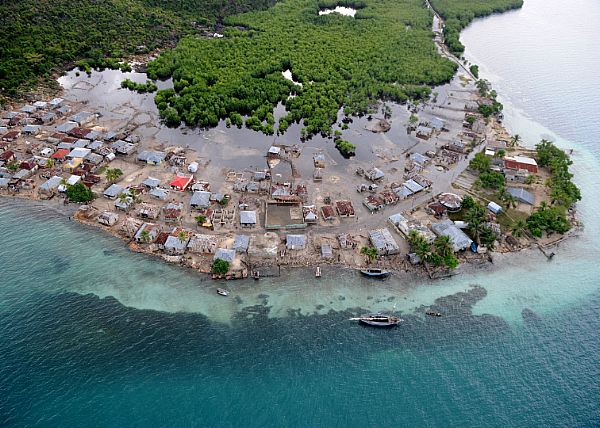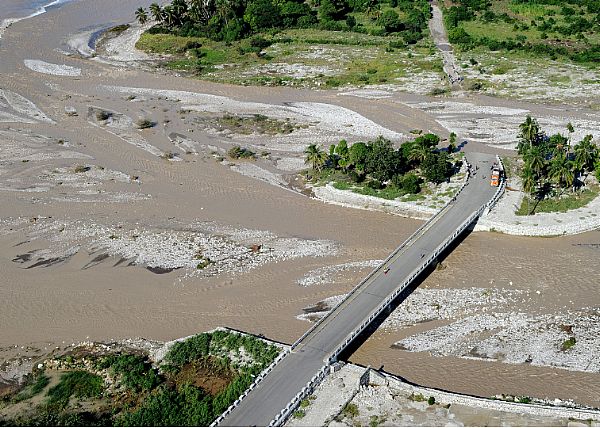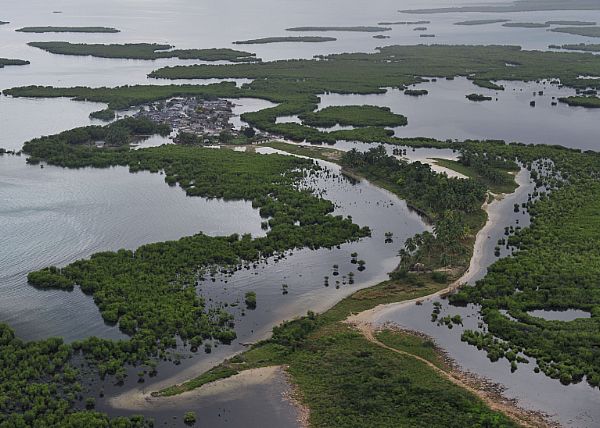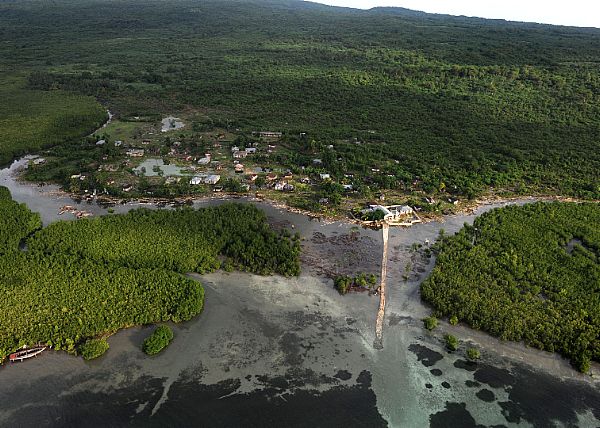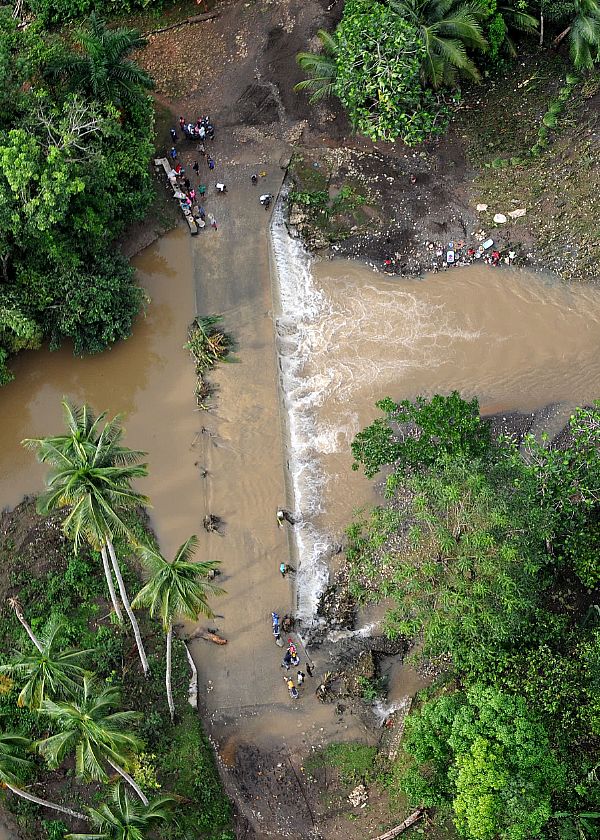 “A tourist got off a plane in Port-au-Prince, told immigration officials he was Miles Graham, 35, a dentist from Omaha. The Haitians looked right past his white cap, tight woolen shirt, dark glasses and absurd phony mustache and said: ‘Welcome, Marlon Brando.’”
“A tourist got off a plane in Port-au-Prince, told immigration officials he was Miles Graham, 35, a dentist from Omaha. The Haitians looked right past his white cap, tight woolen shirt, dark glasses and absurd phony mustache and said: ‘Welcome, Marlon Brando.’”
The Time magazine People item that ran Sept. 28, 1959, was light on intimate details. Brando was in the company of ingénue actress France Nguyen — “lush” was Time’s description of the just-turned-20 Nguyen — who was starring on Broadway in The World of Suzie Wong. A Volkswagen Beetle was rented for getting around. (That will be an eyebrow raiser for those familiar with travelling throughout Haiti.) And the couple danced to the voodoo drums at the Bacoulou nightclub.
Perhaps the tumescent atmosphere didn’t need underscoring then, back in the day when Haiti was a tourist hot spot, a rum-soaked island getaway for romantics and sun-seekers, when lovers swam naked at Kyona Beach and dined at La Picardie in Port-au-Prince, as Brando and Nguyen did.
The journalist and author Bernard Diederich added those details in his book 1959: The Year that Inflamed the Caribbean. The arrival of Cuba’s Castro had caused the U.S. administration to look more favourably upon the murderous little man leading Haiti who conjured the voodoo gods sitting in his bath wearing a black top hat: Papa Doc Duvalier, that bulwark against Communism, as the rationalizing Americans saw it. Thus began a time, Diederich wrote, “of collective denial and frozen expressions . . . as if Medusa had magically turned us all, foreigners and Haitians alike, into stone.”
Still we stare.
Is it too obvious to state, all these years later, that this curiosity of a country is unnervingly destabilizing? What you see in Haiti, an observer told me, depends on where you’re standing. As incongruous as it sounds, a main plank of the country’s economic rehabilitation platform is tourism, which thrives next door in the Dominican Republic and is all but dead in Haiti, and that was before the earthquake, and before the cholera. Where can one possibly stand to get a clear-eyed view of that?
The Royal Caribbean ocean liner is sounding the retreat from its berth at Labadie on Haiti’s north coast.
I cannot determine whether the ship is Freedom of the Seas or Liberty of the Seas or Independence of the Seas, but it sure is big, a multi-storied floating city that can accommodate more than 3,500 passengers. The Oasis of the Seas holds 6,000. Could that be she?
Some of the passengers are waving from their state-room balconies, which is nice.
Abandoned in their wake is the zip line for the adventurers, the aqua park for kids and the beach chairs from which the indolent can order the Labaduzee, the Royal Caribbean’s signature frozen rum punch.
No, I can’t tell you what the Labaduzee tastes like. The beach is off limits to regular folk, cordoned off by sky-high wire fences. When the cruise line states in its tourism literature “Only Royal Caribbean can take you there,” they mean it quite literally. The promotional materials persist in locating Labadie “on the north coast of Hispaniola” — the land mass shared with the Dominican Republic — as if the word “Haiti” would give foreigners the jim-jams.
On this side of the fence, beguilingly decrepit tin-topped water taxis are humped up on the beach. They are painted in reds and blues and yellows, a welcoming sight for wanderers open more to adventure and less to private enclaves.
We are headed to Norm’s Place, one of those guest house names that gets tipped from traveler to traveler as a place you would rather be.
There is no road to Norm’s Place.
To get to Norm’s Place you have to walk up the two-step gangplank of one of these twee boats and putt-putt into the Atlantic Ocean, heading westward, momentarily dwarfed by the Royal Caribbean behemoth and those waving stick figures. As with the city tap-taps — the converted pickups that serve as private buses — the water taxis are emblazoned with comforting affirmations. In our case, La Main du Sauver.
Norm’s Place comes into view as an ancient, low stone guest house tucked in a cove. The grounds are flowered and treed. The bedrooms are scattered in outbuildings behind the main house. Four-poster beds are dressed in mosquito netting. The doors from the main house stand open to the ocean. The sunset is blushing in shades of apricot and goes exceptionally well with a Prestige beer in its stubby brown bottle with its cheery red label.
So this is Haiti. A pretty narrative at last, thank God.
Snap out of it.
“I used to sleep here the whole night when I was 18 years old. We would go swimming at four o’clock in the morning.”
Franck Madiou is rather mournfully tipping his head toward the western reaches of the beach. One doesn’t have to look far to note that what was a stretch of virgin sand — Madiou is holding up an ’80s-era photograph against the horizon — is defiled now by concrete buildings mere steps from the water’s edge. “For me this is a paradise,” he says, staring at the snapshot. He raises his eyes to the newer reality: “That is very ugly.”
There’s the usual tale of corruption and short-term thinking and serial local politicians with pocket-fattening agendas that don’t include, say, shoreline preservation.
When he was a young lad Madiou remembers holiday trips to Port-au-Prince. It was a 2 ½-hour drive from nearby Cap-Haïtien to the capital. Today the trip takes at least six, possibly seven, hours. We flew Salsa Air, an experience that involved extended delays on the way up and, eventually, the absence of our names on the return flight manifest. Photographer Lucas Oleniuk proposed a spirited branding line for the airline: “Why fly when you can dance?”
Back to Norm. “Norm” was Norman Zarchin, an American businessman who travelled through Haiti in the ’70s. Stayed. Started dealing in mahogany masks and sculptures. Fell in love, married Franck’s mother, Angelique.
Norm’s Place is Norm and Angelique’s joint labour of love. Norm died last year. Angelique is temporarily in the U.S., so Madiou is managing the joint.
Madiou’s story-telling takes a sharp corner and goes to what anywhere else would seem an inconceivably dark place. “I was born in Cap-Haïtien . . . 1965,” he says. The time of Papa Doc. His father’s name was Captain Serge Madiou. In the spring of 1967, Captain Madiou was found by the Haitian military’s Grand Tribunal in Port-au-Prince to have conspired with 18 other officers “with the intention of creating a climate of disorder and anarchy with the ultimate goal of a criminal attempt against the life of the Constitutional Chief-for-Life.” Each in the group was found guilty on two counts, mutiny and high treason, and ordered executed at Fort-Dimanche, the dungeon of death where more than 3,000 Haitians were disappeared in the Duvalier years.
The mind snaps and zaps as Madiou recounts the stories he has heard. The prisoners were given food too hot to eat with only 30 seconds to get the gruel down. So they threw their plates against the jail cell walls — “plat,” he says, trying to verbalize what that might sound like — and ate their dinner as it ran in rivers to the stone floor.
He believes his father spent no more than two weeks in Fort-Dimanche. He was told his father instructed his fellow officers: “Do not bend your knee before Duvalier.” He believes his father spat in the face of the bespectacled Chief-for-Life. He believes — and there is some documented support for this — that his father was executed by Duvalier personally.
Madiou was 2. His father’s photo is on his cellphone.
This was meant to be a story about tourism. One gets used to the curlicues of the Haitian reality. Just as I’m expecting a buildup to a thunderous indictment of the Duvalier years, Madiou weaves. “I can tell you the dictatorship of Duvalier was very hard. But under Duvalier’s system we live better. . . . The only thing you have to do is, don’t interfere with political affairs. That way you can send your children to school. You can eat. You have a house or a home. It was better.”
What you see depends on where you’re standing.
I see young laughing, naked boys splish-splashing in the warm ocean waters, hanging off the bows of the water taxis. I go swimming too, with an American backpacker we have picked up on our travels. A fisherman poles slowly alongside and asks if we would like him to bring us conch for dinner. Tip: if you come here and would like to have lobster for dinner, you need to order it early in the day.
Visiting Cap Haïtien in October, 2009, Bill Clinton, then the newly appointed UN special envoy to Haiti, enthused about the prospects for tourism. “I love this place,” he said. “It’s wonderful. I see the potential.”
There is potential. There’s Jacmel with its cultural vibrancy, even if it isn’t the St.-Tropez of the Caribbean as once hoped. More promising is the area further west on the south coast: Les Cayes, Ile-a-Vache. Port-Salut with its beaches. Port-a-Piment with its caves.
But if a tourism plan is to work, it has to work in Cap-Haitien.
Come.
The cicadas are singing so loudly in unison, one can barely hear the clopping of the horses as they head up the stone path to the Citadelle La Ferrière.
Wusses ride horses. Better to walk up the steep incline and pledge not to stop for little rests. It’s harder than it looks.
Situated just south of the Cap, the Citadelle is a UN world heritage site, the landscape is green and glorious, and the experience is as historically gratifying as a trip to any of those French chateaux.
The French. Henri Christophe, who fought in the revolutionary battle under Toussaint L’Ouverture, built the fort so he could put down the French, should they ever return. He declared himself King Henri I, ruler of Haiti’s northern region, and he had bronze and iron cannon hauled up here by human chain to help reinforce the point.
The French never came. Cannonballs remain stacked on site, the breeze drifts languorously across the grounds, and toilets installed prior to completion of the fort in 1813 still do the job: lift the wooden lid and observe the 40-metre open-air descent to the ground. Children would love it.
There are no children. A half-dozen visitors drift about the great stony stairs sucking in the vistas that never end. The grounds of Christophe’s Sans Souci Palace are similarly barren. There are no buyers for the straw hats that blanket the little market area just outside the palace grounds. There’s no one to listen to the tale of an ailing and embattled Christophe killing himself by means of a silver bullet to the heart.
Wait. A tiny gathering of horse-backed tourists approaches. A boozy-looking fellow is teetering side to side, managing to hold a cigarette and a beer in one hand, a sandwich in the other. The little pageant quickly passes.
Twenty years ago, visitors would come by the carload from the DR, says Eduardo Almeida, country manager for the Inter-American Development Bank. For the IADB, tourism is a small, but fundamental, part of its plan for development in the country’s north. “If we focus here we will be able to make a tremendous difference,” he says. “Every week Royal Caribbean stops at Labadie with 6,000 people. . . . So let’s say that 10 per cent of these people would be willing to spend $100. $60,000 a week, $3 million a year. Three million dollars in a region that is totally poor. That’s a lot.”
There are no visitors poised on the underwater sapphire blue bar stools at the Karibe Hotel. It is too cool at this time of year for in-pool drinking.
But the hotel is full. “We mostly have reconstruction wheelers and dealers coming in,” says Richard Buteau, whose family owns the Karibe and the Kinam and the Ritz apartment hotel, all in Port-au-Prince.
The Buteaus have been in the hotel business in Haiti for 80 years, starting with Aux Cosaques, an auberge that Buteau’s grandfather built above the capital in Kenscoff as a cooling getaway. As a young boy Buteau’s father was given the task of priming the oil lamps every Sunday.
That boy would go on to create Le Rond Point, a restaurant near the port, where tourism in the capital really started. “It was the place to be,” says Buteau.
On Tuesday, the Interim Haiti Recovery Commission will once again descend on the Karibe to outline more go-forward plans for the country.
Tourism isn’t the kind of story that draws much press. Buteau, not surprisingly, sees it as a linchpin. “But you need to have people with a vision who believe tourism is an alternative to poverty,” he says. “Even Fidel Castro, one of the biggest leaders in the Caribbean, who threw away capitalism and the tourism industry with his revolution, has realized that if he wants his people to get out of poverty he has to consider tourism as an option.”
Tourism is complicated. “It’s easier to have a textile industry,” Buteau continues. Tourism demands non-stop electricity, water, roads, hospitals, security. But rather than seeing those gaping inadequacies as impediments, Buteau sees tourism as a driver to help force change. Environmental protectionism is in there, too. “Once you bring an economic value to something the people start protecting it rather than destroying it.” Unquestionably, a strong tourism sector is a cultural boost, something that Haiti deserves to benefit from.
Funny, but as we sit behind the hotel on the enormous grounds I realize how quiet it is. Where’s the music? “You put Haitian music next to them, they get annoyed.” He’s talking about the wheeler dealers.
He champions developing the industry in hubs, like the north. “You cannot solve all the problems of Haiti but you can decide, well, we’re going to take that region and we’re going to do a success story there and we’re going to make it happen.” Other hubs would ignite, he believes, if just one success could be proved.
At the end of our conversation we walk through the Karibe lobby. There are photos of Aux Cosaques and Le Rond Point hanging on a wall by the bar. “The good old days,” he says, breezing away to his next appointment.
http://www.thestar.com/haiti/economic/article/908715–haiti-once-had-tourist
